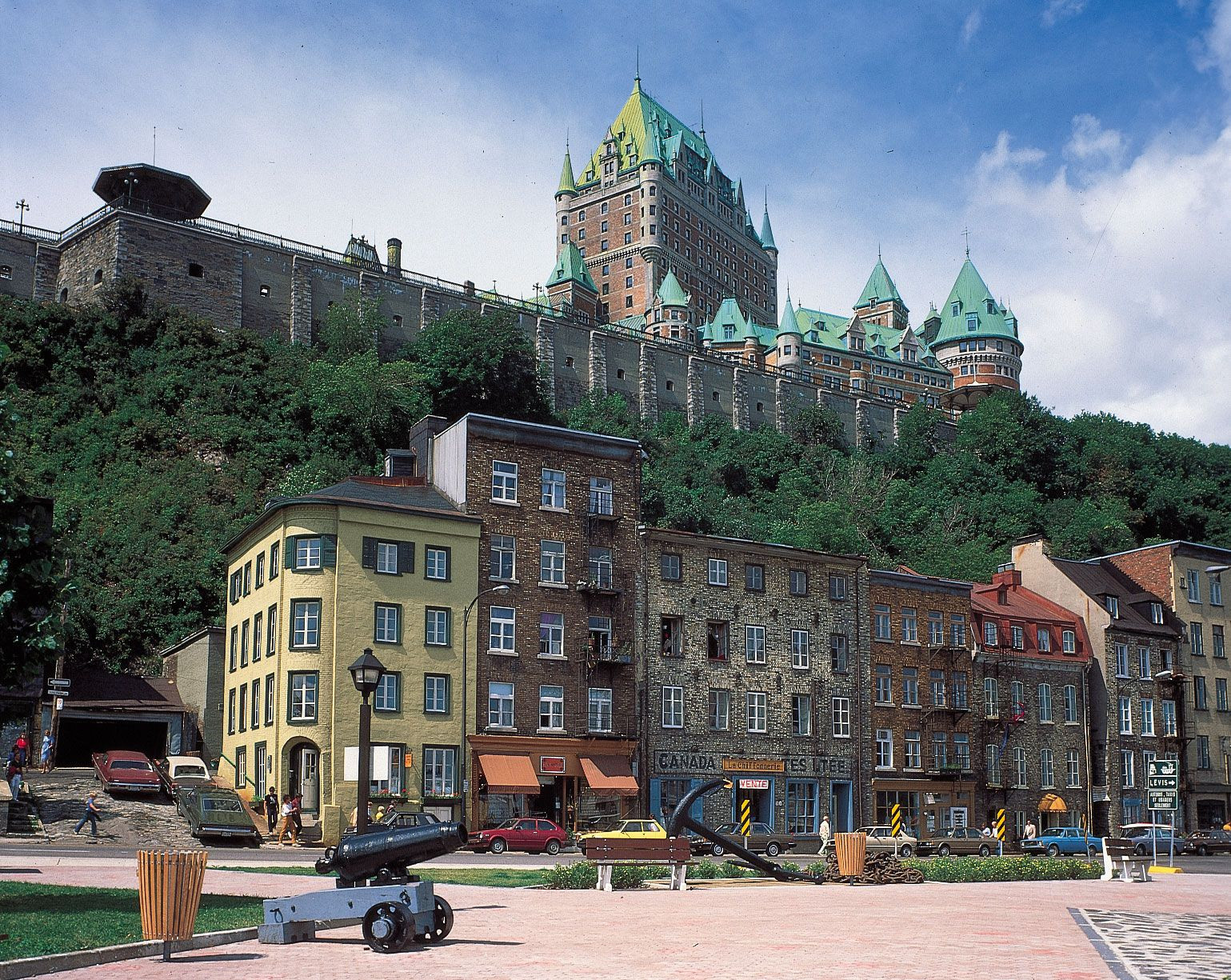Quebec, a name derived from an Algonquian word signifying “where the river narrows,” immediately evokes images of rich history and distinct culture. But Where Is Quebec exactly? This expansive province, the largest in Canada by area and second largest by population, is nestled in the eastern part of the country, playing a pivotal role in Canada’s identity and heritage. Let’s delve into the geographic and cultural landscape of this fascinating region.
Quebec’s location is strategically important, bordering several provinces and U.S. states. To its north lies the vast expanse of Hudson Strait and Ungava Bay, while Newfoundland and Labrador mark its eastern boundary. Moving southeast, Quebec is bordered by the Gulf of St. Lawrence and the province of New Brunswick, as well as the U.S. state of Maine. Its southern neighbors include the U.S. states of New Hampshire, Vermont, and New York, and to the west, it shares borders with Ontario, James Bay, and Hudson Bay. This positioning in eastern Canada places Quebec at the crossroads of diverse geographic and cultural influences.
 Majestic Château Frontenac overlooking the St. Lawrence River in Quebec City, Quebec, Canada.
Majestic Château Frontenac overlooking the St. Lawrence River in Quebec City, Quebec, Canada.
Within its extensive boundaries, Quebec encompasses a variety of landscapes and significant urban centers. Quebec City, the province’s capital, proudly holds the title of Canada’s oldest city. Situated along the banks of the majestic St. Lawrence River, it offers breathtaking views, particularly from landmarks like the Château Frontenac, overlooking the river and Orleans Island. Further downstream, Montreal, the province’s major metropolis and Canada’s second-largest city, is a vibrant hub of culture and commerce. Montreal Island forms the city’s core, extending north to Jesus Island and incorporating various communities on the St. Lawrence River’s south shore. These cities, along with the vast wilderness of the Laurentian Mountains and the fertile plains along the St. Lawrence, define the diverse regions within Quebec.
 Scenic landscape of Quebec province, showcasing its vast natural beauty in Canada.
Scenic landscape of Quebec province, showcasing its vast natural beauty in Canada.
Historically, the boundaries of Quebec have shifted significantly since the establishment of New France in the 17th century. Initially, French influence stretched far into North America, reaching the Gulf of Mexico and west of the Mississippi River. However, regions like James Bay, Hudson Bay, and Ungava were under the control of the British Hudson’s Bay Company. Over time, Quebec’s boundaries expanded northward and eastward, incorporating Ungava and reaching towards Labrador. The present-day borders were solidified in 1927 when the British Privy Council awarded Labrador to Newfoundland, a decision still debated by some Quebec political leaders today.
To truly grasp Quebec’s place, one must understand its unique cultural identity. As Canada’s primary French-speaking province, Quebec stands as a bastion of Francophone culture in North America. This linguistic and cultural distinction stems from its history as New France and its subsequent experience within a predominantly English-speaking Canada. The “Quiet Revolution” of the 1960s marked a significant period of self-assertion for Quebec’s Francophone community, solidifying its Québécois identity and driving efforts to enhance its social, cultural, political, and economic power. This has shaped the dynamic between Francophones and Anglophones both within Quebec and across Canada, leading to ongoing discussions about decentralization and the recognition of Quebec’s distinct place within the Canadian federation.
In conclusion, Quebec is geographically located in eastern Canada, a vast and strategically positioned province with a rich tapestry of landscapes and urban centers. More than just a location, where Quebec is also signifies its cultural and historical significance as the heart of Francophone Canada, a province with a unique identity and a vital role in the Canadian mosaic.


